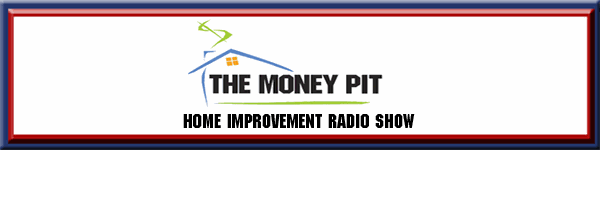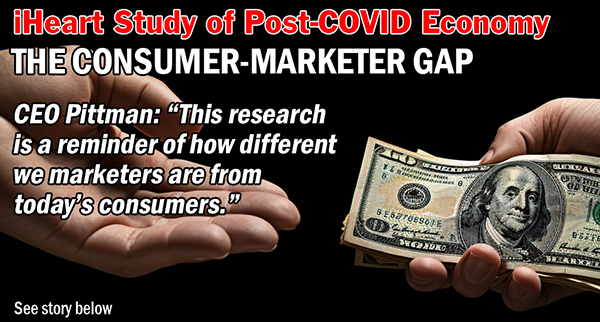By Steve Lapa
Lapcom Communications Corp
President
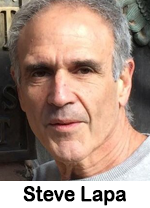 It’s complicated, this whole Federal Trade Commission ruling potentially banning the non-compete. Considering where you stand on the non-compete concept, it’s really all about evaluating the five “C” profile of your media business.
It’s complicated, this whole Federal Trade Commission ruling potentially banning the non-compete. Considering where you stand on the non-compete concept, it’s really all about evaluating the five “C” profile of your media business.
Personally, I sit at a roundtable where all sides are given equal consideration. More about that roundtable later.
First the five Cs of your media business: Company, Culture, Customers, Competition, Compensation. Let us define each.
1. Company – What is the image and reputation of your Company (management) internally?
Externally? Is your Company viewed as a destination or last resort for employment?
2. Culture – Is the atmosphere on your sales team or in your talent pool upbeat, positive performance driven, supportive, with access to key management? Is there a feedback loop that makes employee voices valued in this new world of Zoom, Teams, etc.? Is achievement recognized in a positive manner? Do sellers and talent have input into goals? Are missed goals treated like broken glass or the start of a learning curve?
3. Customers – Advertisers and audience are important customers. Advertisers, the cash register of any ad-based media model, move in only three directions – increase their spend, decrease their spend, flatline spending. Audience scale is the currency of your performing talent. Audience, like advertisers, can only go in three similar directions – increase, decrease, level off. If you are a subscription-based media entity, pay close attention to overdelivering subscriber expectations and lowering churn.
4. Competition – Keep a close eye on what your competitors are paying, how they are recruiting and what they are changing.
5. Compensation – My favorite. Have the courage to pay for performance at the high end and many of your non-compete clauses may not be needed.
Check the boxes on all five Cs in the model as outlined. Now back to my roundtable.
When you consider your company’s view, the non-compete in any media business that provides training (sales, talent, and other personnel), promotional investment, exposure to confidential research and strategies, is not simple to eliminate.
Consider the following:
1. The talent/show that is backed with a six-figure promotional campaign. Should the talent/show be allowed to seek employment at a competitor who is smart enough to realize, your company invested the money to make the talent/show a success, and all the competitor needs to do is revise compensation and lift a few restrictions? Your company’s investment could never be paid back.
2. Ever sit in on a focus group project? When the participants open the perception spigot, the bucket can fill up with verbal gold. Whomever gains access to that research and the resulting strategic change in direction has their hands on confidential information that can help drive results off the charts. How is the company’s investment in that research protected? What about the employees learning how it all works?
3. Good sales training, seminars, and off-site are not cheap, and considered an investment in all sellers and management. Should you really be permitted to walk across the street with no notice and all that expensive training in your laptop?
I’m writing this column as a roundtable, considering all sides and it is still complicated.
Steve Lapa is the president of Lapcom Communications Corp. based in Palm Beach Gardens, FL. Lapcom is a media sales, marketing, and development consultancy. Contact Steve Lapa via email at: Steve@Lapcomventures.com.
Share this with your network
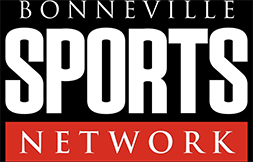 their local market. Bonneville says, “The platform brings together Arizona Sports, Seattle Sports, Denver Sports, Sactown Sports, and KSL Sports in Salt Lake City, delivering more than 63 hours of live sports programming every day across audio, video, digital, and social channels.” Bonneville president and CEO Tanya Vea adds, “Bonneville Sports Network gives advertisers both flexibility and scale. Our network reaches fans wherever and whenever they engage with sports, across every platform. Advertisers can now leverage that strength in a way that aligns with their goals, whether they’re pursuing national reach or meaningful local impact.”
their local market. Bonneville says, “The platform brings together Arizona Sports, Seattle Sports, Denver Sports, Sactown Sports, and KSL Sports in Salt Lake City, delivering more than 63 hours of live sports programming every day across audio, video, digital, and social channels.” Bonneville president and CEO Tanya Vea adds, “Bonneville Sports Network gives advertisers both flexibility and scale. Our network reaches fans wherever and whenever they engage with sports, across every platform. Advertisers can now leverage that strength in a way that aligns with their goals, whether they’re pursuing national reach or meaningful local impact.”


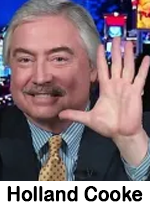 These aren’t just bulletin boards. They’re extensions of your station, where listeners expect to be acknowledged and advertisers expect to see results.
These aren’t just bulletin boards. They’re extensions of your station, where listeners expect to be acknowledged and advertisers expect to see results.
 president and CEO John Rosso says, “Sharon has been instrumental in our continued success at Triton Digital, and her promotion to chief revenue officer is a reflection of her exceptional leadership, strategic thinking and proven ability to drive results. Her track record in scaling audio technology platforms and her deep understanding of the evolving digital landscape will be invaluable as we accelerate our global growth and deepen partnerships with audio publishers and advertisers.”
president and CEO John Rosso says, “Sharon has been instrumental in our continued success at Triton Digital, and her promotion to chief revenue officer is a reflection of her exceptional leadership, strategic thinking and proven ability to drive results. Her track record in scaling audio technology platforms and her deep understanding of the evolving digital landscape will be invaluable as we accelerate our global growth and deepen partnerships with audio publishers and advertisers.” (NMI).” Nielsen adds, “As podcast listenership continues to grow, it is critical for advertisers to have sophisticated tools and data to effectively plan, measure and optimize their audio investments. Nielsen Podcast Fusion in NMI will provide an even more holistic view of media planning and help users uncover valuable insights and demonstrate the effectiveness of their campaigns. NMI users will also be able to optimize media plans by specific podcast networks and genres, as well as top podcast programs.” NPR and Ocean Media are among the charter subscribers at launch.
(NMI).” Nielsen adds, “As podcast listenership continues to grow, it is critical for advertisers to have sophisticated tools and data to effectively plan, measure and optimize their audio investments. Nielsen Podcast Fusion in NMI will provide an even more holistic view of media planning and help users uncover valuable insights and demonstrate the effectiveness of their campaigns. NMI users will also be able to optimize media plans by specific podcast networks and genres, as well as top podcast programs.” NPR and Ocean Media are among the charter subscribers at launch. “creative quality is the number one sales driver” and this is often a surprise to advertisers and media agencies who think media tactics (targeting, reach, etc.) drive the most sales. It’s for good reason that everyone wants high brand awareness. A major study from TikTok reveals the greater a brand’s awareness, the greater the purchase conversion. Brands with high aided awareness have 2.86x greater conversion rates compared to low awareness brands. But not all categories operate similarly, Podscribe says that purchase conversion varies widely by advertising category and advises that it’s important to understand the purchase conversion benchmarks for your product category.
“creative quality is the number one sales driver” and this is often a surprise to advertisers and media agencies who think media tactics (targeting, reach, etc.) drive the most sales. It’s for good reason that everyone wants high brand awareness. A major study from TikTok reveals the greater a brand’s awareness, the greater the purchase conversion. Brands with high aided awareness have 2.86x greater conversion rates compared to low awareness brands. But not all categories operate similarly, Podscribe says that purchase conversion varies widely by advertising category and advises that it’s important to understand the purchase conversion benchmarks for your product category.  The addition of these stations fits perfectly into our late founder, my father, Thomas H. Draper’s motto that it is our moral obligation to serve our audience and advertising partners.” In a press release, Draper says it currently operates WBOC-TV, FOX21, WRDE-TV, Telemundo Delmarva, Antenna TV, My Cozi TV, The DSN Sports Network, and multiple FM radio stations across the Delmarva Peninsula. Speaking for seller Forever Media, president Lynn Deppen comments, “We are proud of the legacy these stations have built in their communities and grateful to our dedicated teams who have served listeners with passion and professionalism. We are confident that Draper Media shares our commitment to local broadcasting and will continue to provide outstanding service to audiences and advertisers alike as these stations enter an exciting new chapter.” The transaction is expected to close in the third quarter of 2025, subject to approval by the FCC.
The addition of these stations fits perfectly into our late founder, my father, Thomas H. Draper’s motto that it is our moral obligation to serve our audience and advertising partners.” In a press release, Draper says it currently operates WBOC-TV, FOX21, WRDE-TV, Telemundo Delmarva, Antenna TV, My Cozi TV, The DSN Sports Network, and multiple FM radio stations across the Delmarva Peninsula. Speaking for seller Forever Media, president Lynn Deppen comments, “We are proud of the legacy these stations have built in their communities and grateful to our dedicated teams who have served listeners with passion and professionalism. We are confident that Draper Media shares our commitment to local broadcasting and will continue to provide outstanding service to audiences and advertisers alike as these stations enter an exciting new chapter.” The transaction is expected to close in the third quarter of 2025, subject to approval by the FCC.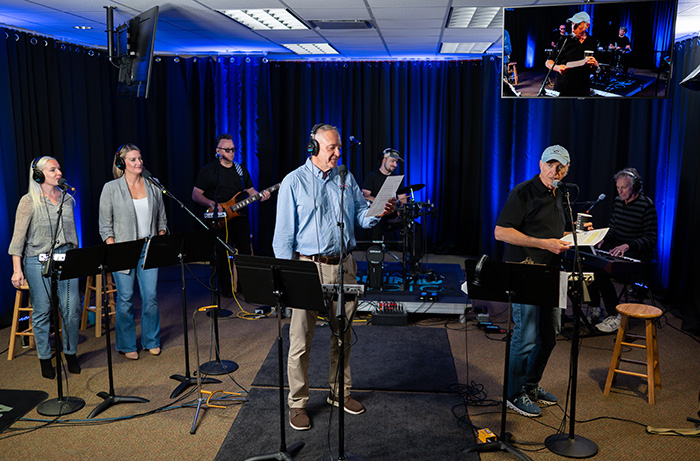
 ad-supported media campaign. Among the findings is that in order to ensure that digital audio buys are effective, marketers should commit news/talk and sports stations because they represent 28% of all 25-54 AM/FM radio streaming audiences. Among 25-54s, spoken-word formats have a massive 28% streaming share, 2.4 times larger than the overall spoken word share of 12%. The news/talk format has a 6.7% share of total AM/FM radio listening. The streaming share for news/talk is 15.4% — more than double its total share. The sports format has a 12.5 share of the streaming audience, 2.5 times bigger than its overall 5 share. Further, the data indicates that for the 18-34 demographic, sports and news/talk streaming is a combined 19.6% share.
ad-supported media campaign. Among the findings is that in order to ensure that digital audio buys are effective, marketers should commit news/talk and sports stations because they represent 28% of all 25-54 AM/FM radio streaming audiences. Among 25-54s, spoken-word formats have a massive 28% streaming share, 2.4 times larger than the overall spoken word share of 12%. The news/talk format has a 6.7% share of total AM/FM radio listening. The streaming share for news/talk is 15.4% — more than double its total share. The sports format has a 12.5 share of the streaming audience, 2.5 times bigger than its overall 5 share. Further, the data indicates that for the 18-34 demographic, sports and news/talk streaming is a combined 19.6% share.  Right now, dozens of well-suited, over-priced, unpleasant lawyers are fighting in Hollywood over the title credit their client should receive on a movie, TV show, or book cover. Placement within the credit roll at the end of a show is a battleground of egos and legalities. Part of the process of securing proper credit is governed by multiple union rules negotiated by multiple unions and corporate dictates of corporate masters. (You don’t get to be CEO of Paramount by being a nice guy.)
Right now, dozens of well-suited, over-priced, unpleasant lawyers are fighting in Hollywood over the title credit their client should receive on a movie, TV show, or book cover. Placement within the credit roll at the end of a show is a battleground of egos and legalities. Part of the process of securing proper credit is governed by multiple union rules negotiated by multiple unions and corporate dictates of corporate masters. (You don’t get to be CEO of Paramount by being a nice guy.)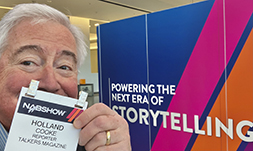 Radio sells advertisers our listeners’ attention. For a hundred years, our inventory has largely been commercials. Now, as our wandering audience leads us to more revenue channels, are we hooked on spots?
Radio sells advertisers our listeners’ attention. For a hundred years, our inventory has largely been commercials. Now, as our wandering audience leads us to more revenue channels, are we hooked on spots?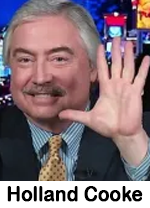 There has never been more news. And news has never been more quotable. It costs two-plus cents to make a penny.
There has never been more news. And news has never been more quotable. It costs two-plus cents to make a penny. Metrics and “Share of Ear” Report, MRI-Simmons, Screen Engine/ASI, Podscribe, and Magellan AI. Four of the key findings from this are: 1) Podcast ad campaigns are too light: No brand is coming close to “saturating” podcast audiences; Brands should allocate 5% of digital budgets to podcasting; 2) After five years with a median age of 33 to 34, podcast audiences finally age to 36, reflecting broader appeal with older audiences; 3) Screen Engine/ASI: Podcast audiences offer CTV advertisers significant incremental reach; and 4) Podcasts tighten their grip on audio audiences: Among podcast listeners, 35% of all audio time spent now goes to podcasts.
Metrics and “Share of Ear” Report, MRI-Simmons, Screen Engine/ASI, Podscribe, and Magellan AI. Four of the key findings from this are: 1) Podcast ad campaigns are too light: No brand is coming close to “saturating” podcast audiences; Brands should allocate 5% of digital budgets to podcasting; 2) After five years with a median age of 33 to 34, podcast audiences finally age to 36, reflecting broader appeal with older audiences; 3) Screen Engine/ASI: Podcast audiences offer CTV advertisers significant incremental reach; and 4) Podcasts tighten their grip on audio audiences: Among podcast listeners, 35% of all audio time spent now goes to podcasts. 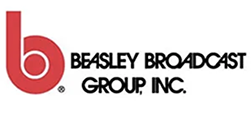 success of our digital transformation strategy led to a 10.4% year-over-year increase in same-station second quarter digital revenue, partially offsetting ongoing challenges related to softness in the audio advertising spot market. Digital revenue accounted for nearly 22% of total second quarter revenue, in-line with our full-year 2024 goal of 20% to 25% of total revenue. On the new business front, our dedicated sales teams are leveraging the audience reach and engagement of our platform to attract new advertisers. We have and will continue to see the benefit of political revenue through the end of year, and at the same time, we are taking aggressive action to address near-term challenges through expense management initiatives, which drove approximately $2 million in expense savings compared to the prior year. We expect to achieve $10 million in annualized expense savings.”
success of our digital transformation strategy led to a 10.4% year-over-year increase in same-station second quarter digital revenue, partially offsetting ongoing challenges related to softness in the audio advertising spot market. Digital revenue accounted for nearly 22% of total second quarter revenue, in-line with our full-year 2024 goal of 20% to 25% of total revenue. On the new business front, our dedicated sales teams are leveraging the audience reach and engagement of our platform to attract new advertisers. We have and will continue to see the benefit of political revenue through the end of year, and at the same time, we are taking aggressive action to address near-term challenges through expense management initiatives, which drove approximately $2 million in expense savings compared to the prior year. We expect to achieve $10 million in annualized expense savings.”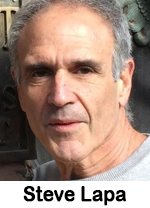 When it comes to advertisers who cancel, Elon Musk said it loud and clear at the NY Times Dealbook Summit, “Go F-Yourself.” He claimed advertisers who objected to content on X were “blackmailing him with money” by canceling ad campaigns on his X platform.
When it comes to advertisers who cancel, Elon Musk said it loud and clear at the NY Times Dealbook Summit, “Go F-Yourself.” He claimed advertisers who objected to content on X were “blackmailing him with money” by canceling ad campaigns on his X platform.
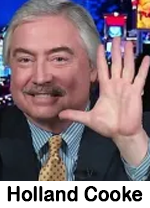 Today, consultant Holland Cooke writes, “With 850-plus confirmed 2024 tornadoes – just halfway through the season – each night’s network TV newscast can make you “thankful that we don’t live THERE…” And with more gnarly weather on the way this week across much of the USA, he reckons that, “regardless of your format, your station can be the weather button that listeners will push, and advertisers can sponsor.” And he suggests a tactic proven over 80 years ago.
Today, consultant Holland Cooke writes, “With 850-plus confirmed 2024 tornadoes – just halfway through the season – each night’s network TV newscast can make you “thankful that we don’t live THERE…” And with more gnarly weather on the way this week across much of the USA, he reckons that, “regardless of your format, your station can be the weather button that listeners will push, and advertisers can sponsor.” And he suggests a tactic proven over 80 years ago. 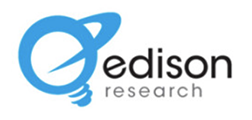 says that key points for advertisers to know about podcast listeners include: 1) More people than ever are listening to podcasts: 67% of the 12+ population has ever listened to a podcast; 47% of the 12+ population are monthly podcast listeners and 34% are weekly listeners; 2) Listeners are spending more time than ever with podcasts: In 2014, out of the daily time spent listening to all audio by those age 13+, 2% was spent with podcasts. In 2024, that number more than quadrupled and podcasts now account for 11% of daily time with audio. Twenty-three percent of weekly podcast listeners spend 10 hours or more listening to the medium each week; and 3) Podcasts reach all generations: 29% of kids age 6-12, 59% of those age 12-34, 55% of those age 35-54, and 27% of those age 55+ are monthly podcast listeners.
says that key points for advertisers to know about podcast listeners include: 1) More people than ever are listening to podcasts: 67% of the 12+ population has ever listened to a podcast; 47% of the 12+ population are monthly podcast listeners and 34% are weekly listeners; 2) Listeners are spending more time than ever with podcasts: In 2014, out of the daily time spent listening to all audio by those age 13+, 2% was spent with podcasts. In 2024, that number more than quadrupled and podcasts now account for 11% of daily time with audio. Twenty-three percent of weekly podcast listeners spend 10 hours or more listening to the medium each week; and 3) Podcasts reach all generations: 29% of kids age 6-12, 59% of those age 12-34, 55% of those age 35-54, and 27% of those age 55+ are monthly podcast listeners.  Actor Hugh Grant’s Tweet called it “The destruction of the human experience. Courtesy of Silicon Valley.” He was reacting to Apple’s
Actor Hugh Grant’s Tweet called it “The destruction of the human experience. Courtesy of Silicon Valley.” He was reacting to Apple’s 
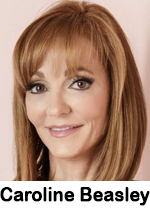 of $3.5 million for the same period in 2023, “primarily due to the $6 million gain on the sale of an investment in BMI holdings and lower interest expense.” Company CEO Caroline Beasley states, “Beasley continues to advance our core initiatives, which are focused on driving revenue and cash flow, including our digital transformation, revenue diversification and expense management initiatives. We expect digital to account for between 20% and 25% of total revenue in 2024, driven by the ongoing growth and success of our premium content creation and digital services. On the new business front, our dedicated sales teams are leveraging the tremendous audience reach and engagement of our platform to attract new advertisers. In summary, Beasley’s underlying fundamentals – mainly, our local audio and digital platforms and audience engagement – remain strong. We are proud of our teams’ steadfast commitment to delivering exceptional content and services to our listeners, advertisers, online users and sports fans, and remain confident that the actions we are taking to transform our company and strengthen our balance sheet, are laying the foundation for future growth and success.”
of $3.5 million for the same period in 2023, “primarily due to the $6 million gain on the sale of an investment in BMI holdings and lower interest expense.” Company CEO Caroline Beasley states, “Beasley continues to advance our core initiatives, which are focused on driving revenue and cash flow, including our digital transformation, revenue diversification and expense management initiatives. We expect digital to account for between 20% and 25% of total revenue in 2024, driven by the ongoing growth and success of our premium content creation and digital services. On the new business front, our dedicated sales teams are leveraging the tremendous audience reach and engagement of our platform to attract new advertisers. In summary, Beasley’s underlying fundamentals – mainly, our local audio and digital platforms and audience engagement – remain strong. We are proud of our teams’ steadfast commitment to delivering exceptional content and services to our listeners, advertisers, online users and sports fans, and remain confident that the actions we are taking to transform our company and strengthen our balance sheet, are laying the foundation for future growth and success.” Ratings – and advertisers’ results – reward what listeners remember, what sticks-out, not clichés that blend-in. So, avoid blah-blah-blah such as…
Ratings – and advertisers’ results – reward what listeners remember, what sticks-out, not clichés that blend-in. So, avoid blah-blah-blah such as…
 It’s complicated, this whole Federal Trade Commission ruling potentially banning the non-compete. Considering where you stand on the non-compete concept, it’s really all about evaluating the five “C” profile of your media business.
It’s complicated, this whole Federal Trade Commission ruling potentially banning the non-compete. Considering where you stand on the non-compete concept, it’s really all about evaluating the five “C” profile of your media business.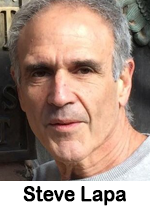 The media headlines are dizzying these days, yet they all share one common thread. See if you can solve this puzzle.
The media headlines are dizzying these days, yet they all share one common thread. See if you can solve this puzzle. Will video save the radio star? I hope so.
Will video save the radio star? I hope so. Is that host read you are pitching “baked-in?”
Is that host read you are pitching “baked-in?”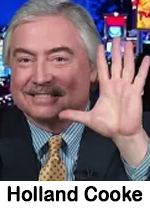 If you’re a news/talk station, don’t assume that you own “news radio” in your market. Imaging is important, but it merely talks-the-talk. You walk-the-walk with local news copy that delivers what solid commercial copy does: benefits. Just doing local news makes you special. But do listeners simply hear a station voice… reading something? Are you merely… accurate? Or do you deliver “take-home pay,” unwrapping the story to tell the listener something useful?
If you’re a news/talk station, don’t assume that you own “news radio” in your market. Imaging is important, but it merely talks-the-talk. You walk-the-walk with local news copy that delivers what solid commercial copy does: benefits. Just doing local news makes you special. But do listeners simply hear a station voice… reading something? Are you merely… accurate? Or do you deliver “take-home pay,” unwrapping the story to tell the listener something useful?
 “News Talk 1050” and two music brands. Townsquare regional vice president Robert Wawrzyniec says, “Mike is the ideal executive to lead Townsquare’s broadcast and digital operations in West Central Missouri. Most important, he knows the Sedalia market and what resonates with its listeners and advertisers. His expertise in creating, developing and executing exceptional local multi-platform solutions for advertising and marketing clients, as well as driving new business opportunities and forging important community partnerships, has resulted in deep client relationships and a strong commitment to listeners. I am looking forward to working with him in his new role.”
“News Talk 1050” and two music brands. Townsquare regional vice president Robert Wawrzyniec says, “Mike is the ideal executive to lead Townsquare’s broadcast and digital operations in West Central Missouri. Most important, he knows the Sedalia market and what resonates with its listeners and advertisers. His expertise in creating, developing and executing exceptional local multi-platform solutions for advertising and marketing clients, as well as driving new business opportunities and forging important community partnerships, has resulted in deep client relationships and a strong commitment to listeners. I am looking forward to working with him in his new role.”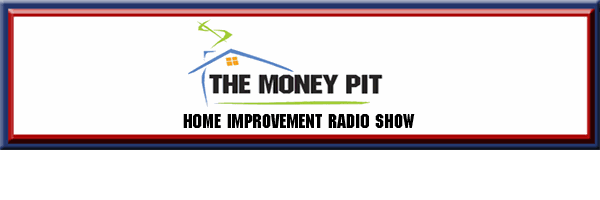
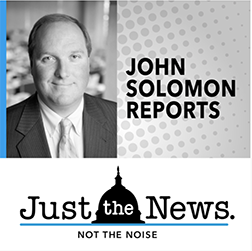 News for its podcasts from John Solomon, Victor Davis Hanson, and “Bauer and Rose” on the SPN platform. The agreement allows Salem to market and sell the podcasts to its array of advertisers and provide additional promotional support. Salem SVP Phil Boyce says, “John Solomon and his team are a perfect fit for Salem and will provide an additional layer of news credibility to the stories he covers. When you add Victor Davis Hanson’s podcasts, and those of Bauer and Rose, it makes the partnership complete.” Solomon comments, “Salem Podcast Network has amassed one of the most formidable audiences and lineups in the industry. We are excited to be joining the team and introducing our news and analysis to a whole new audience.”
News for its podcasts from John Solomon, Victor Davis Hanson, and “Bauer and Rose” on the SPN platform. The agreement allows Salem to market and sell the podcasts to its array of advertisers and provide additional promotional support. Salem SVP Phil Boyce says, “John Solomon and his team are a perfect fit for Salem and will provide an additional layer of news credibility to the stories he covers. When you add Victor Davis Hanson’s podcasts, and those of Bauer and Rose, it makes the partnership complete.” Solomon comments, “Salem Podcast Network has amassed one of the most formidable audiences and lineups in the industry. We are excited to be joining the team and introducing our news and analysis to a whole new audience.” Ready to go back to the future?
Ready to go back to the future? Radio talkers: What is this hour about? How will listeners benefit from listening? And how long do you expect them to wait to hear that?
Radio talkers: What is this hour about? How will listeners benefit from listening? And how long do you expect them to wait to hear that?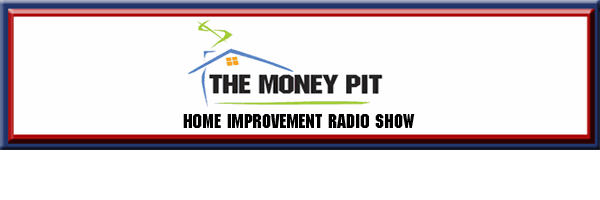
 I asked my pal, longtime radio seller, now retired: “How often were you asked, ‘How much would you charge for ONE commercial?’”
I asked my pal, longtime radio seller, now retired: “How often were you asked, ‘How much would you charge for ONE commercial?’”